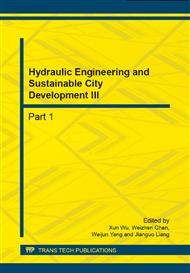p.1163
p.1168
p.1172
p.1176
p.1183
p.1187
p.1191
p.1195
p.1200
Study on the Correlation of N, P Nutrients and Chlorella Growth
Abstract:
In this paper, the Chlorella vulgaris in Yellow River Diversion reservoir was selected as experimental subjects to cultivate in laboratory. The the relationship between algae biomass and N,P was studied from the following aspects:the type of nitrogen source, the concentration of N and P,and the ratio of N and P. It was found that KNO3 was one of the best nitrogen source for growth of Chlorella vulgaris. Chlorella vulgaris can live at the lower N concentration, while it was very difficult to survive in the absence of P. So P is the limiting factor for its growth. In addition, the optimum ratio of nitrogen to phosphorus was 16:1, for Chlorella vulgaris’s growth. It was similar to the algae outbreak in the water eutrophication, glycine as the Chlorella nutrition, the algae grew slow at early and later rapid.
Info:
Periodical:
Pages:
1183-1186
Citation:
Online since:
September 2014
Authors:
Price:
Сopyright:
© 2014 Trans Tech Publications Ltd. All Rights Reserved
Share:
Citation:


